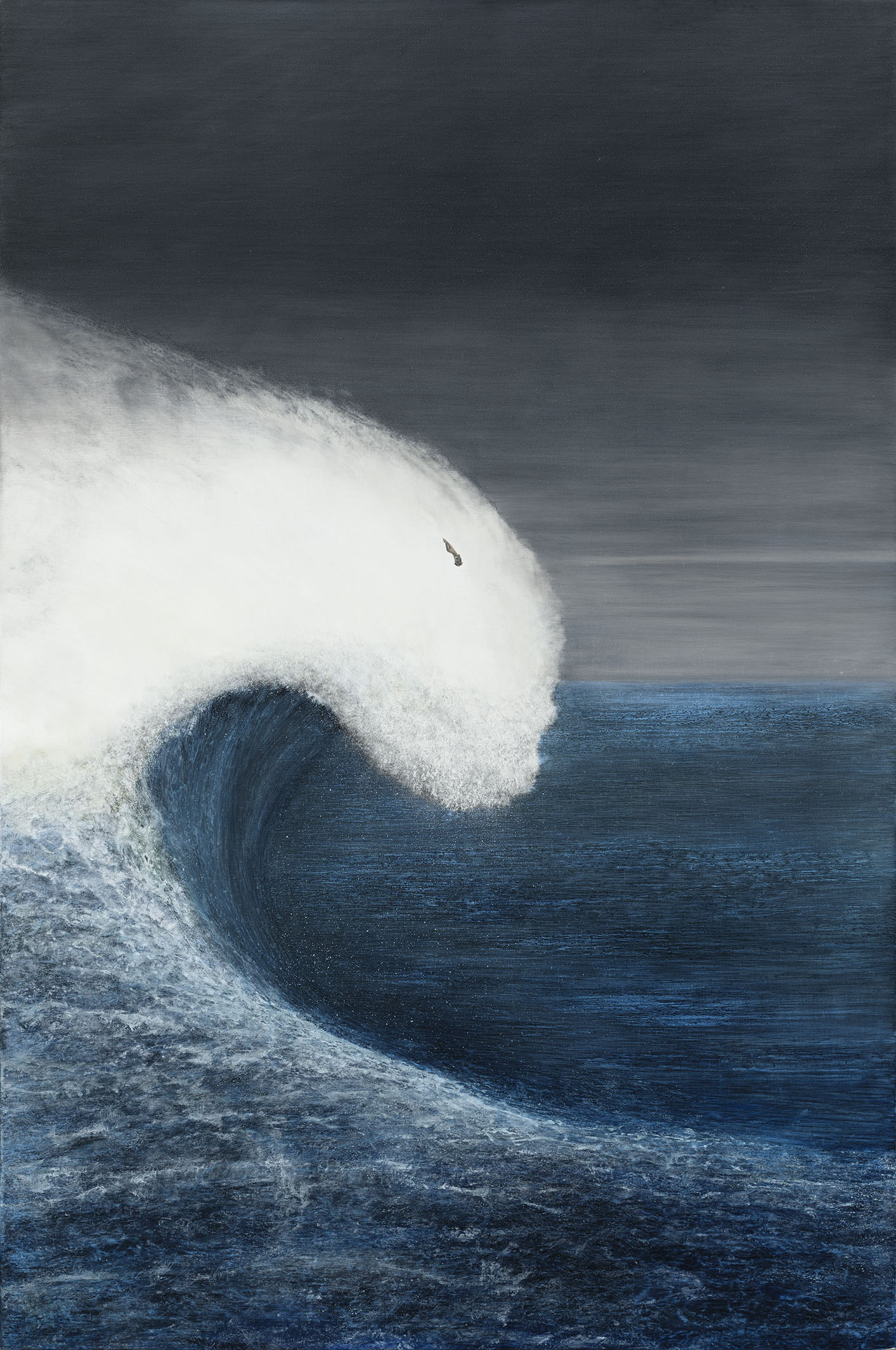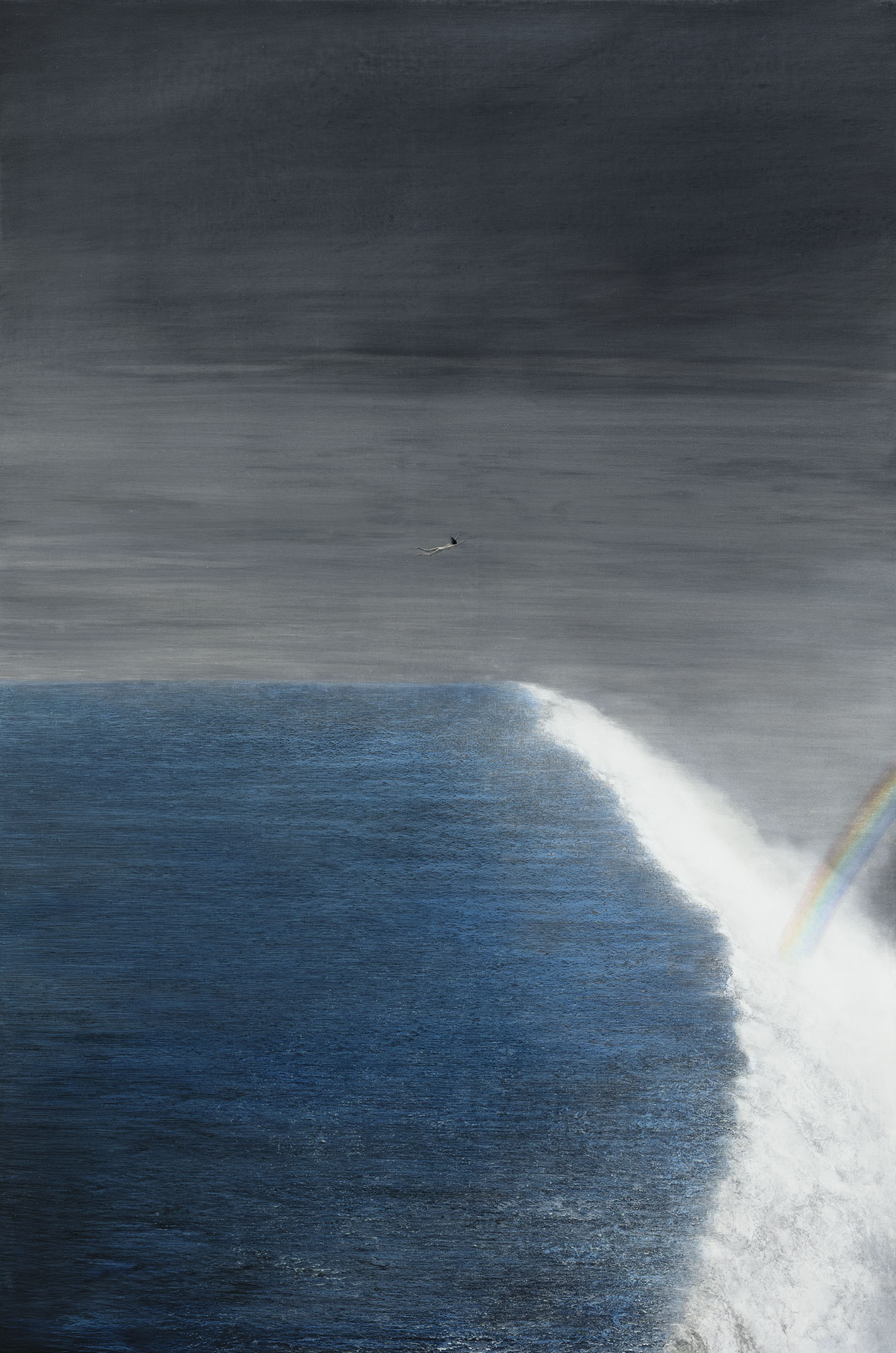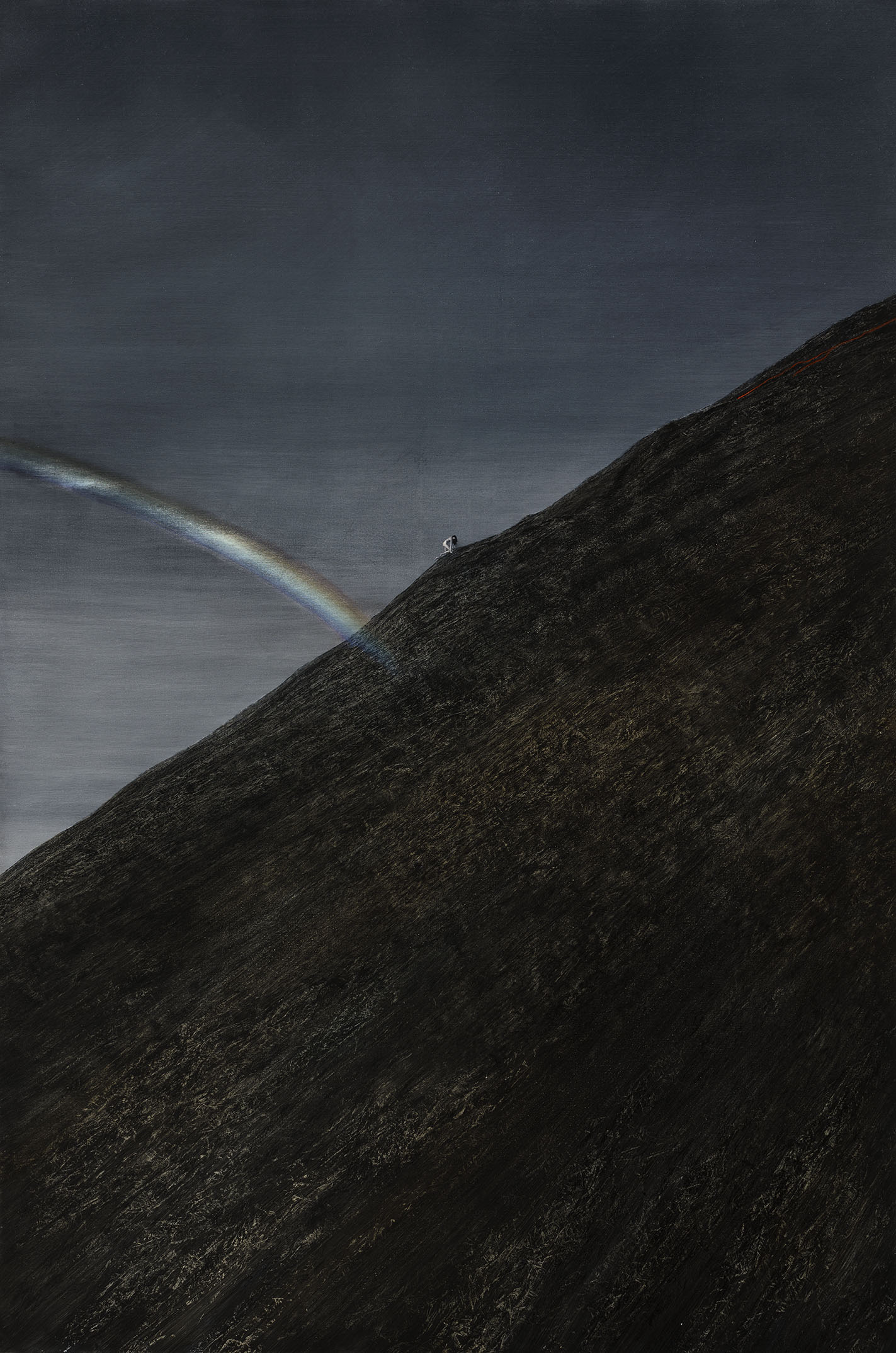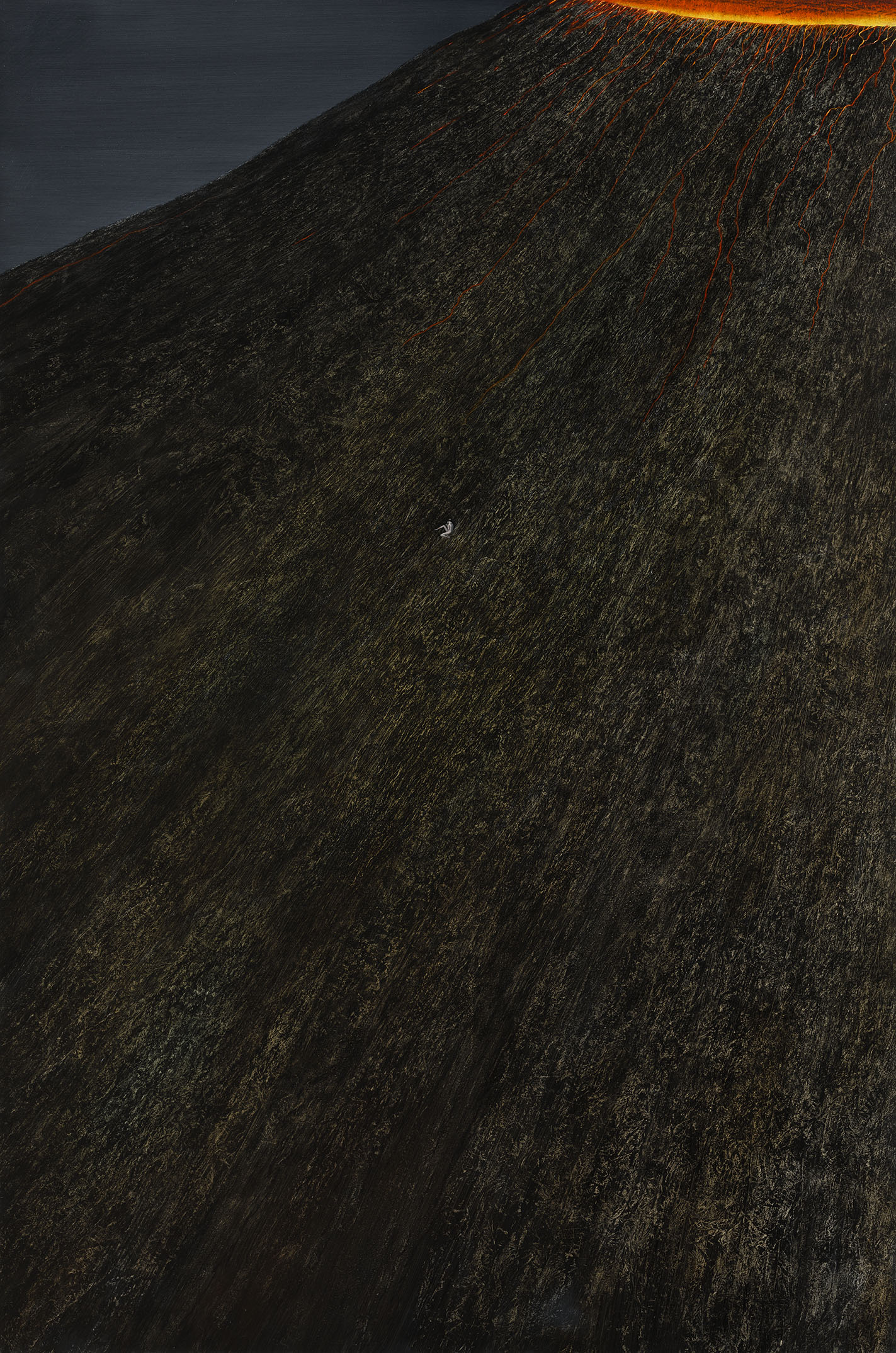Omnipotent Nature, Painted by Shiori Eda
The artist brings into opposition the strength of the elements and the vulnerable bodies of humans, questioning our actions and convictions.

© Shiori Eda / A2Z Art Gallery
In Shiori Eda‘s paintings, nature dominates the canvas. It envelops, swallows up every part, and reveals its power. In the midst of it are human figures, naked and vulnerable, facing the elements. Minuscules, they try to find their place in a world dominated by earth, air, fire, and water.
For several years, the Japanese painter, born in Tokyo in 1983, has been developing a piece that lies on the border between representational art and surrealism. In her creations, she brings humans and nature face to face and captures a symbiotic relationship that’s at once gentle, violent, frightening, and extraordinary.
A philosophical essay
In the monumental work Unnatural is in nature, Shiori Eda weaves an almost biblical, apocalyptic tale, following the adventures of a young woman. She begins sitting at the top of a mountain, surrounded by water, before a tsunami sweeps her up and projects her onto the side of a volcano, which she then struggles to scale. Water, air, fire, earth, and metal follow one after the other over the course of these events, and demonstrate the artist’s desire to anchor her character in the elements. Far more than a simple tale, however, Unnatural is in nature is a philosophical essay. The protagonist, an anonymous, fragile figure, acts as an allegory for mankind, determined to discover who they are and where they come from.
In this world where technology does not exist and where nature has reclaimed its rights, it is necessary to question one’s actions and convictions. Looking at Shiori Eda’s paintings, the viewer is forced to reflect. The notions of natural and unnatural, of value and liberty, mingle and become opposing forces. Which path will we choose? To transgress natural laws or accept them? The artist continues to expand on these metaphysical questions: the monumental piece will evolve over time, and other canvases of the same size will continue to show how the story unfolds.
Unnatural is in nature (2020), a piece by Shiori Eda, can be viewed on the A2Z Art Gallery‘s website.

© Shiori Eda / A2Z Art Gallery

© Shiori Eda / A2Z Art Gallery

© Shiori Eda / A2Z Art Gallery

© Shiori Eda / A2Z Art Gallery

© Shiori Eda / A2Z Art Gallery
TRENDING
-
The Tattoos that Marked the Criminals of the Edo Period
Traditional tattoos were strong signifiers; murderers had head tattoos, while theft might result in an arm tattoo.

-
Paris, Tokyo: Robert Compagnon
With his co-chef and talented wife, Jessica Yang, Robert Compagnon opened one of the top new restaurants in Paris: Le Rigmarole.
 3:31
3:31 -
The Story of Sada Yacco, the Geisha who Bewitched Europe
Described by Dazed magazine as the first beauty influencer, she has been restored to her former glory since 2019.

-
Ito Jakuchu's Naturalist Paintings
From 15 September until 14 October 2018, the Petit Palais showcased the artist's iconic ‘Images of the Colourful Realm of Living Beings’.

-
Chiharu Shiota, Red Threads of the Soul
Last year, more than 660,000 people visited the retrospective 'Chiharu Shiota: The Soul Trembles' exhibit at the Mori Art Museum.





